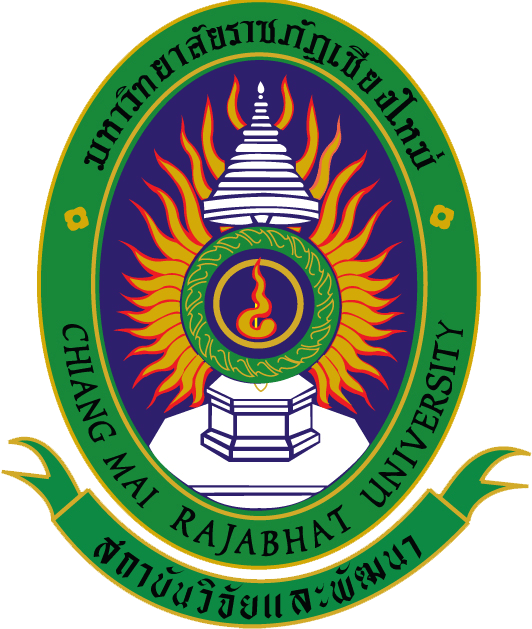
ระบบสารสนเทศงานวิจัย สถาบันวิจัยและพัฒนา มหาวิทยาลัยราชภัฏเชียงใหม่
Research Information System(RIS)
การพัฒนารูปแบบการท่องเที่ยวเชิงสร้างสรรค์อย่างยั่งยืนตามแนวทางเศรษฐกิจพอเพียง : พื้นที่หมู่บ้านลุ่มแม่น้ำวางตอนล่าง อำเภอแม่วางจังหวัดเชียงใหม่
อาจารย์มณวิภา ยาเจริญ
คณะมนุษยศาสตร์และสังคมศาสตร์
คำสำคัญ :
เลขทะเบียน :
1369-63-HUSO-TSRI
บทคัดย่อ
การศึกษาเรื่อง “การพัฒนารูปแบบการท่องเที่ยวเชิงสร้างสรรค์อย่างยั่งยืนตามแนวทางเศรษฐกิจพอเพียง : พื้นที่หมู่บ้านลุ่มแม่น้ำวางตอนล่าง อำเภอแม่วาง จังหวัดเชียงใหม่” มีวัตถุประสงค์ของการวิจัย 3 ประการ ได้แก่ 1) เพื่อศึกษาศักยภาพของชุมชนในการจัดการการท่องเที่ยวเชิงสร้างสรรค์ในพื้นที่หมู่บ้านลุ่มแม่น้ำวางตอนล่าง 2) เพื่อศึกษาแนวทางการจัดการท่องเที่ยวเชิงสร้างสรรค์บนพื้นฐานเศรษฐกิจพอเพียงให้เหมาะสมกับบริบทของชุมชน 3) เพื่อสร้างรูปแบบจัดการท่องเที่ยวเชิงสร้างสรรค์อย่างยั่งยืนตามแนวทางเศรษฐกิจพอเพียงในพื้นที่หมู่บ้านลุ่มแม่น้ำวางตอนล่าง เป็นการวิจัยในรูปแบบ การวิจัยเชิงปฏิบัติการอย่างมีส่วนร่วม (PAR) ในพื้นที่ลุ่มแม่น้ำวางตอนล่าง ซึ่งประกอบด้วย หมู่บ้านแม่สะป๊อก บ้านแม่มูต บ้านสบวิน บ้านห้วยโป่ง และบ้านวังผาปูน ตำบลแม่วิน อำเภอแม่วาง จังหวัดเชียงใหม่ โดยมีผู้ร่วมในกระบวนการวิจัย จำนวน 152 คน แบ่งเป็น กลุ่มเป้าหมายในพื้นที่วิจัย จำนวน 50 คน กลุ่มผู้เข้าร่วมกิจกรรมทดสอบโปรแกรมการท่องเที่ยว จำนวน 51 คน และ กลุ่มนักท่องเที่ยวทดลอง จำนวน 51 คน ทำการเก็บ รวบรวมข้อมูล ด้วยเครื่องมือการวิจัยเชิงปริมาณและเชิงคุณภาพ ประกอบด้วย แบบสัมภาษณ์แบบกึ่งโครงสร้าง การประชุมกลุ่มย่อย การประชุมเชิงปฏิบัติการ การอบรมเชิงปฏิบัติการ การสำรวจภาคสนาม และ แบบประเมินความพึงพอใจของผู้รับบริการ
ผลการวิจัย พบว่า พื้นที่หมู่บ้านลุ่มแม่น้ำวางตอนล่าง อำเภอแม่วาง จังหวัดเชียงใหม่ มีศักยภาพด้านการท่องเที่ยว ซึ่งเป็นจุดแข็งของพื้นที่ เนื่องจากมีแหล่งท่องเที่ยวและกิจกรรมที่หลากหลาย เช่น แหล่งท่องเที่ยววัฒนธรรมวิถีชีวิต แหล่งท่องเที่ยวประเภทธรรมชาติ และมีการจัดกิจกรรมการเรียนรู้ด้านเศรษฐกิจพอเพียงในชุมชนรวมทั้งการมีภาคีเครือข่ายในการพัฒนาการท่องเที่ยว ในด้านจุดอ่อนพบว่า ยังขาดการพัฒนาแหล่งท่องเที่ยวและการบริหารจัดการแหล่ง
ข
ท่องเที่ยวให้มีความพร้อมสามารถรองรับนักท่องเที่ยวได้ ในด้านโอกาสพบว่า นโยบายของภาครัฐที่ส่งเสริมการท่องเที่ยวโดยชุมชน และเทคโนโลยีการสื่อสาร ส่งผลให้ชุมชนมีโอกาสในการเข้าถึงการพัฒนาและการตลาดได้มากขึ้น และในด้านของอุปสรรคนั้นพบว่า ผลกระทบจากการแพร่ระบาดของเชื้อไวรัสโคโรนา (Covid – 19) เศรษฐกิจที่ตกต่ำ รวมทั้งรูปแบบการท่องเที่ยวโดยผู้ประกอบการภายนอก ยังคงเป็นข้อจำกัดในการพัฒนาท่องเที่ยวของชุมชน อย่างไรก็ตาม แนวทางการจัดการท่องเที่ยวเชิงสร้างสรรค์บนพื้นฐานเศรษฐกิจพอเพียง ได้ให้ความสำคัญต่อการเสริมศักยภาพในด้านจุดแข็ง การเพิ่มโอกาส และการลดจุดอ่อน ข้อจำกัด ของพื้นที่ โดยการอบรมเชิงปฏิบัติการ และการพัฒนาโปรแกรมการท่องเที่ยวเชิงสร้างสรรค์ ภายใต้แนวทางเศรษฐกิจพอเพียง ชุมชนลุ่มแม่น้ำวางตอนล่าง เพื่อทดสอบและประเมินผล ซึ่งพบว่า ผู้รับบริการ มีความประทับใจในกิจกรรมการเรียนรู้ด้านภูมิปัญญา วิถีชีวิต การเรียนรู้การทำเกษตรอินทรีย์ และการอนุรักษ์ทรัพยากรธรรมชาติ อยู่ในระดับมากที่สุด มีความพึงพอใจในความมีมิตรไมตรีและการต้อนรับของชาวบ้าน และ การอนุรักษ์และถ่ายทอดศิลปวัฒนธรรมท้องถิ่น มีผลการประเมินความพึงพอใจอยู่ในระดับมากที่สุด
รูปแบบจัดการท่องเที่ยวเชิงสร้างสรรค์อย่างยั่งยืนตามแนวทางเศรษฐกิจพอเพียงในพื้นที่หมู่บ้านลุ่มแม่น้ำวางตอนล่าง จึงเป็นการต่อยอดต้นทุนของชุมชน ทั้งด้าน ทรัพยากรธรรมชาติ การเกษตร วิถีชีวิต วัฒนธรรมภูมิปัญญา สู่การพัฒนาให้การสร้างเศรษฐกิจเชิงสร้างสรรค์ โดยใช้การท่องเที่ยวเป็นเครื่องมือในการอนุรักษ์ทรัพยากรธรรมชาติ วัฒนธรรม วิถีชีวิตของชุมชนให้คงอยู่ สามารถสร้างรายได้เสริมให้คนในชุมชน รวมไปถึงการการสร้างจิตสำนึก ความภาคภูมิใจ และความสามัคคีของคนในชุมชน จากคนรุ่นหนึ่งไปสู่คนอีกรุ่นหนึ่ง
Abstract
The research title: The Development of Sustainable Creative Tourism Model based on Sufficiency Economy: the lower Wang River Basin, Mae Wang District, Chiang Mai Province
The purposes of this research were 1) to study potentials of the local community in managing creative tourism in the village area of lower Mae Wang watershed; 2) to study a practical approach which suited the community context to manage creative tourism following sufficiency economy concept; 3) to build a practical management scheme for creative tourism in the village area of lower Mae Wang watershed. Participatory Action Research: PAR was used in this research which was conducted in the villages of lower Mae Wang watershed including Mae Sapok, Mae Moot, Sob Win, Huey Pong and Wang Pa Poon in Mae Win Sub-district, Mae Wang District, Chiang Mai Province. There were 152 participants in this study, consisting of 50 persons in the target group, 51 persons participating in tour program testing activities and 51 tourists in the program. The study was conducted with quantitative and qualitative instruments which were semi-structured interviews, buzz sessions, workshops, workshop training, field surveys and satisfaction surveys.
The major results of the research revealed that the village area of lower Mae Wang watershed, Mae Wang District, Chiang Mai Province had a high tourism potential as its strengths due to its many tourist attractions and variety of tourism activities such as cultural and natural tourist sites, sufficiency economy learning activities and also, collaborative networks that helped in tourism development in the community. However, as the findings showed, the lack of good tourist site development and management to meet tourist carrying capacity was its weakness. On the opportunity aspect, it was found that the policies from government agencies supporting “tourism by the community” together with the communication technology gave positive impacts by letting the people able to access the development and marketing tools better. And for the threats, it was indicated by the study that the effect from Corona Virus (Covid-19), the recession along with tourism business operated by outsiders caused limitations in the community tourism development.
However, the creative tourism management guidelines with sufficiency economy concept focus on raising potentials on strengths, creating more opportunities, reducing weaknesses and area limitations by providing more workshop trainings and improving creative tourism programs in order to test and to get the assessment under the concept of sufficiency economy in the lower Mae Wang watershed community. From the practice, the outcome showed that the service recipients were impressed at the highest level by the learning activities on local wisdom, the community’s way of life, organic farming, natural resource conservation. It was also shown on the satisfaction surveys that the locals’ kind hospitality, warm reception as well as the local art and culture conservation and relaying were marked with the highest level of satisfaction by the tourists.
The good management for sustainable creative tourism following the sufficiency economy concept in the village area of lower Mae Wang watershed will become an effective tool to multiply the community resources, in the aspect of natural resources, agriculture, way of life, and wisdom-based culture and will help to generate creative business by having tourism as an instrument to conserve natural resources, culture and the community’s way of life as well as to generate extra income for the locals, create awareness, pride and harmony among people in the community from generation to generation.
ไฟล์งานวิจัย
ข้อมูลการตีพิมพ์
ชื่อบทความ :
แหล่งที่ตีพิมพ์ :วารสารวิชาการวิทยาลัยบริหารศาสตร์ปีที่ 6 ฉบับที่ 3 ประจำเดือน กรกฏาคม - กันยายน 2566
ปีที่ตีพิมพ์ :2566
ข้อมูลการนำไปใช้ประโยชน์
34 27 เม.ย. 2563
สำนักงานคณะกรรมการส่งเสริมวิทยาศาสตร์ วิจัยและนวัตกรรม (สกสว.)
สำนักงานคณะกรรมการส่งเสริมวิทยาศาสตร์ วิจัยและนวัตกรรม (สกสว.) ชั้น 14 อาคาร เอส เอ็ม ทาวเวอร์ 979/17-21 ถนนพหลโยธิน แขวงสามเสนใน เขตพญาไท กรุงเทพฯ 10400
02 278 8200
callcenter@trf.or.th, webmaster@trf.or.th